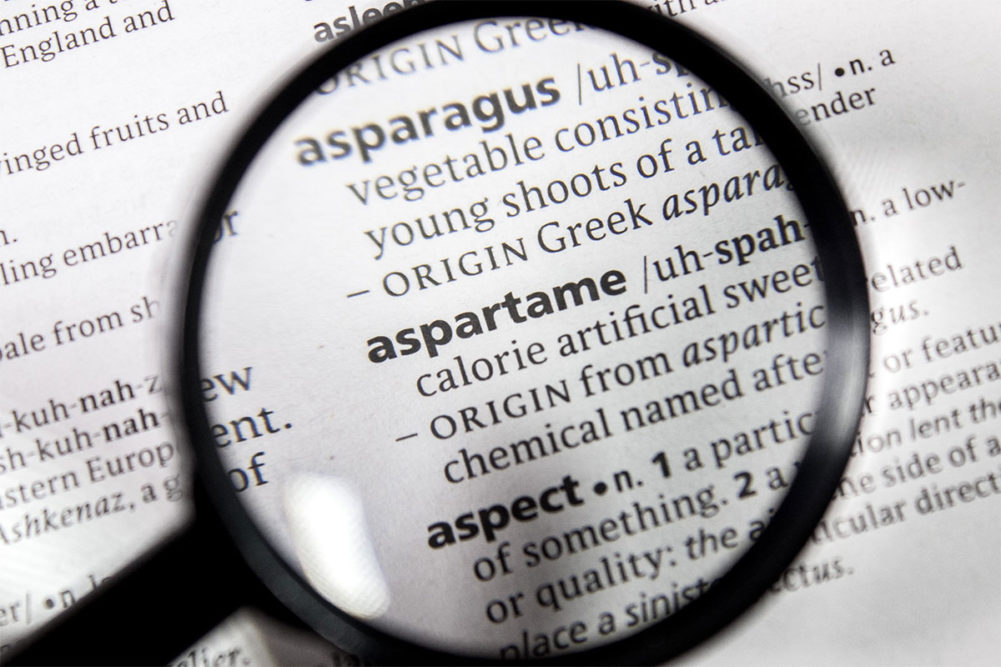CHICAGO — Aspartame has been the subject of several controversies since its initial approval by the US Food and Drug Administration in 1974.
The most recent headlines were made mid-July, after the World Health Organization (WHO) on July 13 cited “limited evidence” for carcinogenicity of aspartame in humans, fueling the International Agency for Research on Cancer (IARC) to classify aspartame as “possibly carcinogenic to humans.” Then the Food and Agriculture Organization (FAO) Joint Expert Committee on Food Additives (JECFA) issued a statement reaffirming that 40 mg of aspartame per one kg of body weight is a safe amount to consume on a daily basis.
Soon after, the FDA issued a statement disagreeing with the IARC’s conclusion.
“Aspartame is one of the most studied food additives in the human food supply,” the FDA said. “FDA scientists do not have safety concerns when aspartame is used under the approved conditions.”
Aspartame is an artificial sweetener used in various food and beverage products, including diet drinks, chewing gum, gelatin, ice cream, yogurt and more. So why now, after around 40 years of Americans consuming aspartame, is the pot being stirred regarding its safety as a food ingredient?
“The news had indeed created a buzz across the global food and beverage sector and amongst consumers,” said Ayushi Gupta, food scientist, Kearney’s industrial redesign practice PERLab, Chicago. “Why the aspartame scare is making a comeback is a bit of a mystery.”
Some of the talk among attendees and exhibitors at IFT FIRST, the Institute of Food Technologists’ annual meeting held July 16-19 in Chicago, was that the sugar industry is behind the resurgence of the conversation regarding aspartame’s safety as a means to stop painting sugar as the villain in the obesity epidemic. Organizations such as the Center for Science in the Public Interest, Washington, have further created commotion on the topic.
“Under the IARC system, a determination of ‘limited’ for human evidence alone leads to an overall conclusion of ‘possibly carcinogenic to humans,’” said Thomas Galligan, principal scientist at CSPI. “Notably, IARC’s decision to list aspartame as ‘possibly’ carcinogenic, as opposed to the more definitive finding of ‘probably’ carcinogenic, was far from unanimous. A minority of IARC experts concluded the animal evidence was ‘sufficient’ to establish that aspartame causes cancer in animals, which would have led to an even higher classification.”
He did, however, continue to state that consumers should remember that sugary drinks contribute to the risk of type 2 diabetes, tooth decay and other health problems.
“The last thing a diet soda drinker should do in response to the aspartame finding is switch to regular soda,” he said. “We hope responsible companies will carefully consider IARC’s findings and move away from aspartame and toward safer sweeteners, such as stevia, whenever possible.”
And that’s what a lot of formulators were exploring while at IFT FIRST. Thom King, chief executive officer, Icon Foods, Portland, Ore., said that between the WHO’s evaluation of aspartame, and a March 2023 article in Nature suggesting sucralose may increase cancer risk, his company has been inundated by requests for clean label replacements.
“Our booth was slammed so hard the first two hours we ran out of brochures,” Mr. King said. “Many major manufacturers were clamoring to talk about ways to get aspartame and sucralose out of their finished goods.
“There are a lot of options like stevia, monk fruit, allulose, erythritol, sweet fibers and thaumatin. These read well on an ingredient declaration, as well as the Nutrition Facts panel. Consumers will demand these sweeteners.”
The challenge is that none of these sweeteners can directly replace aspartame. Each sweetener has a different lingering and sweetness intensity, which makes it hard to just take one sweetener out and replace it with another.
“Formulators tend to pair aspartame with acesulfame potassium to help provide a taste that is closer to sugar,” said Denise Baldeh, director of research and development, Wixon, St. Francis, Wis “When we remove the aspartame, the sweetness perception will change. No two high-intensity sweeteners are created equal. The result could be that a product a consumer fell in love with no longer tastes the same, and the solution to match the aspartame might not be available.”
So far there are no regulatory implications of the WHO report. The study simply illustrated a correlation, not causation.
“In all likelihood, this will fade away in the next few months like the scare earlier this year that erythritol is associated with a potential cardiac event,” Mr. King said. “But the genie is out of the bottle, and the general public and consumers have had their strings pulled. This will have a monetary effect as consumers read labels and identify ingredients they are afraid to consume. The trickledown effect may be more store buyers not bringing in products that contain aspartame or sucralose.”
Ms. Gupta added, “The findings are too recent to impact the sweetener businesses or to show any pertinent decline in revenue or sales of aspartame. Having said that, it is important for the industries to future proof their portfolios by reformulating products in radar, while aiming for sensorial parity and consumer wins.”
Current aspartame-sweetened products likely will not go away, as many consumers are not willing to give up their one-a-day Diet Coke fix. But future innovations likely will choose clean label options to play it safe.
“The majority of our customers have already shifted away from aspartame, and if they are using an artificial sweetener, they tend to use sucralose,” Ms. Baldeh said. “As the consumer landscape is shifting, the majority of the requests that have come our way are for natural, high-intensity sweeteners, not artificial ones.”




